Glass with high light transmission
For high visibility
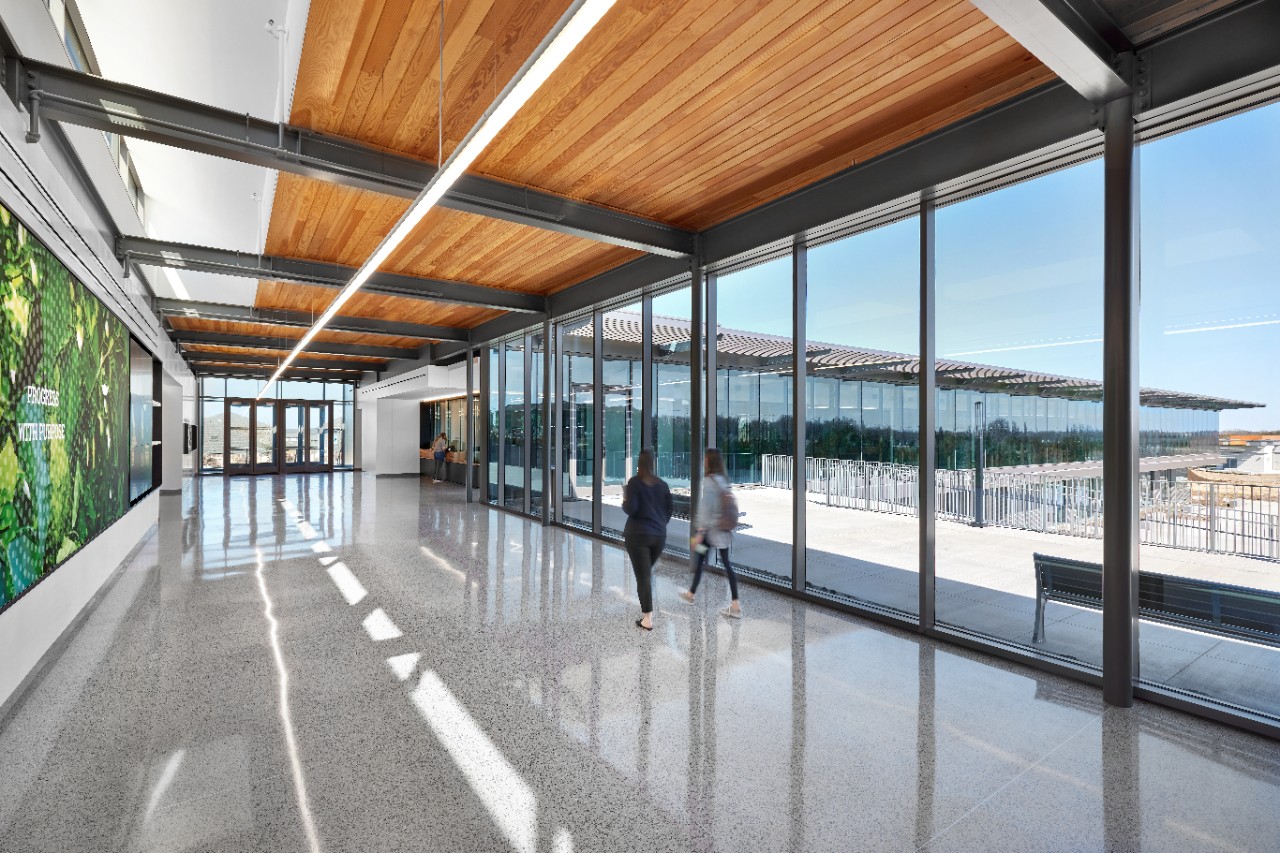
High visibility is a sought-after quality of glass wherever architects want to put the interior of a building on display. With a transparent look, this glass type can harvest light to create inviting entrances, shop fronts, transition spaces or any part of the building where visibility and connection between the exterior and interior environments is desired. The clear, crisp, transparent look of this glass helps enhance visual appeal and maximize daylight and views.
- What are the benefits of glass with high light transmission?
- What is high visibility glass?
- How do you help ensure that the right balance of heat and light enters a building?
- What type of glass can be used for high visibility?
- How can low-iron glass increase visibility?
- Applications for high visibility glass
What are the benefits of glass with high light transmission?
Enhance views and connectivity
Glass acts as a physical barrier to protect occupants from the elements while also minimizing visual barriers. Glass with high light transmission creates a transparent effect that showcases life inside the building to the external world. Meanwhile, inhabitants can enjoy unobstructed views of the exterior landscape.
Occupant wellbeing
Glass with high light transmission allows light to flow into interior spaces. Naturally illuminated interiors can have several positive impacts for occupants. Increased exposure to outdoor views and soothing qualities of natural light can contribute to healthy, comfortable and uplifting spaces that promote overall wellbeing.
Potential energy savings
Advanced low-E coating formulations can allow for high light transmission to help reduce the need for artificial lighting, while also providing solar and thermal properties. In warm climates, low-E coated glass with high light transmission can help limit unwanted heat to help reduce the burden on cooling systems. In cold climates, the capture of solar heat through the glass can also aid in passive heating, helping to lower overall energy demands.
Aesthetic range
Glass with high light transmission offers unique aesthetic options. The low-E coating and substrate combination influences the exterior color of the façade, ranging from color neutral to subtle blue or green hues. The high light transmission glass we recommend for high visibility has a color rendering index (CRI) of 92 or higher, for true views inside and to the outside of the building.*
* The color rendering index (CRI) describes the extent to which natural light is modified by glazing. CRI values range from zero (the least consistent with natural daylight) to 100 (the most consistent). A value of 100 means that the color of an object observed under filtered daylight matches its color as observed under direct daylight.
Our glass with high light transmission for high visibility:
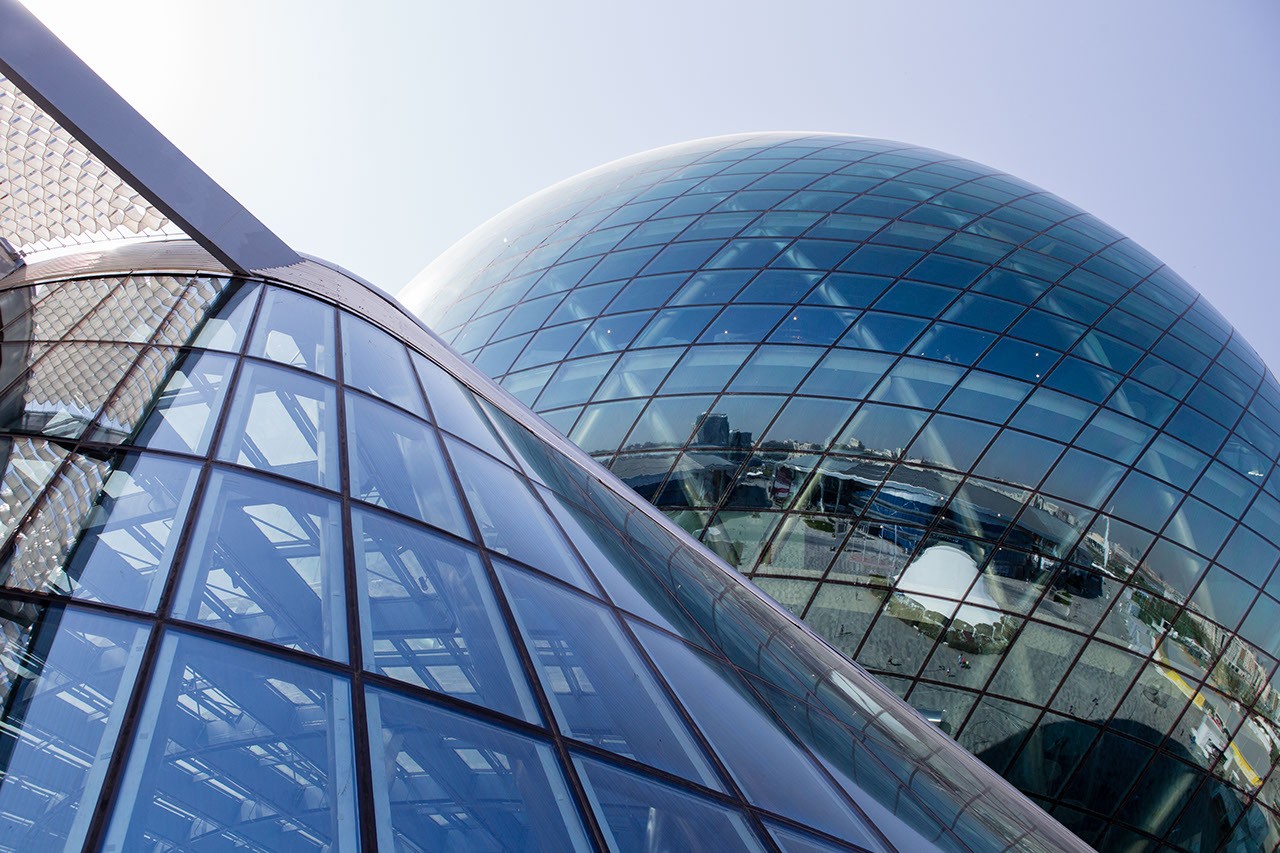
Our Guardian SunGuard™ glass products offer different levels of solar control and light transmission, and various aesthetic options. View our glass solutions with the highest visible light transmission (VLT) for high visibility.
What is high visibility glass?
Selecting glass options with a high level of VLT and a low level of reflectivity helps achieve high visibility glass. This formula helps high visibility glass appear transparent and color neutral.
How do you help ensure that the right balance of heat and light enters a building?
Determining how much visible light to allow into a building is a fine balancing act. On one hand, we need to illuminate spaces with mood-boosting daylight. On the other hand, we want to maintain comfortable indoor temperatures. Paying attention to light to solar gain (LSG) can help.

LSG is a ratio comparing the amount of visible light a piece of glass allows in while reducing unwanted heat gain. Increasing VLT – the amount of visible light transmitted through the glass – and/or reducing the solar heat gain elevates LSG. This ratio offers a great comparative data point when looking to right-size the desired level of light transmission with the level of thermal and solar performance that is required to make buildings functional and comfortable.
Glass with a high LSG can be beneficial in summer conditions, warmer regions and South- and West-facing façades where natural light is desirable but solar heat gain is not.
Many of the Guardian glass solutions designed for high light transmission incorporate double- or triple-silver low-E glass coatings, providing an optimal LSG ratio to help keep interior spaces well-lit and comfortable. Guardian has also developed coatings that will have a high level of light transmission with a higher SHGC value to aid in colder climates where passive solar heat gain is beneficial in reducing energy dependency.
What type of glass can be used for high visibility?
Coatings can change the appearance, light transmission and reflectivity of glass. The commercial construction standard in North America is a 1" insulating glass unit that consists of two ¼" lites of glass separated by a ½" Argon cavity. Prior to introducing a low-E coating, a 1" IGU using two lites of standard clear glass offers 80% VLT and 15% outdoor reflectivity.
While low-E coatings help enhance energy performance, they also affect the level of light transmission and reflectivity of the insulating glass unit. To enhance outside-in views, we recommend using glass with a VLT of at least 50% and outdoor reflectivity below 15%. This formula helps to provide ample daylight into the interior spaces while avoiding a mirrored appearance that would obstruct views to the interior.
The aesthetic of our low-E coated glass solutions that support high visibility range from neutral to subtle blue or green hues to help create bright, boundless spaces with visually pleasing aesthetics.
How can low-iron glass help increase visibility?
While substrates can have a big impact on the aesthetics of the exterior façade, there is minimal impact to solar performance. Combining low-E coatings with our Guardian UltraClear™ low-iron glass can further enhance the level of visible light transmission and color neutrality of the exterior façade compared to standard clear glass substrates.
Product | Visible Light Transmittance (tv%) | U-Value (Btu/hr·ft²·F) | Solar Heat Gain Coefficient (SHGC) | Light to Solar Gain (LSG) |
| 6 mm/12.7 mm Argon filled Spacer/6 mm | ||||
| Clear – Clear, no coating | 80% | 0.47 | 0.74 | 1.1 |
| SN 68 on Clear | 68% | 0.25 | 0.37 | 1.8 |
| SN 68 on UltraClear™ low-iron glass | 71% | 0.25 | 0.39 | 1.8 |
Want to know more about glass and its properties?
Guardian Glass offers you a wealth of technical notes, tools and online learning to enhance your knowledge about glass and help you specify the most appropriate glass for your project. Discover our specification tools on the Resource Hub!
Applications for high visibility glass
High visibility glass can be used to help maximize daylight and views and create a crisp, clean look for your building. It can also put indoor activity on display for entrances, atriums, podiums, storefronts and more.
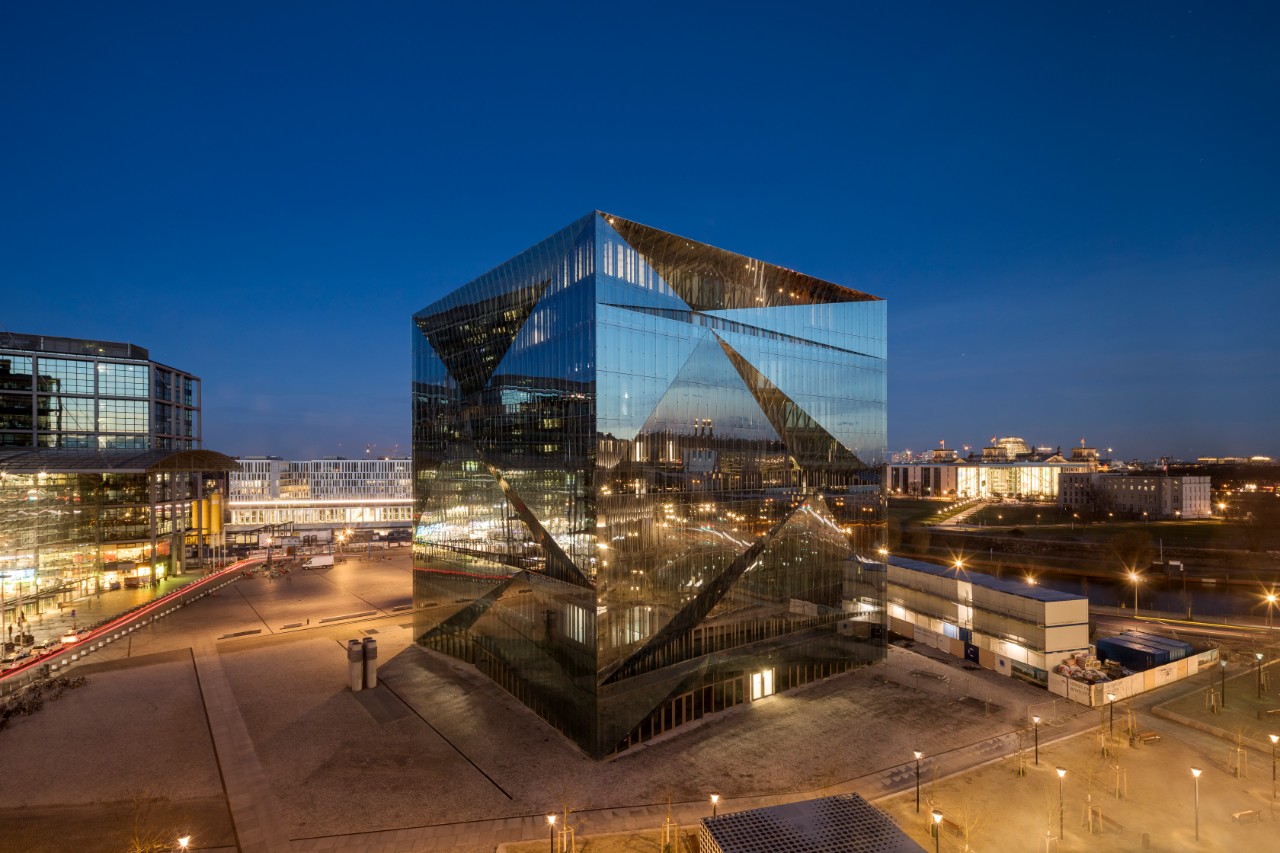
Curtain walls
Glass with high light transmission allows daylight to cascade through curtain wall designs. Interior spaces are bathed with light and help create a more interactive environment.
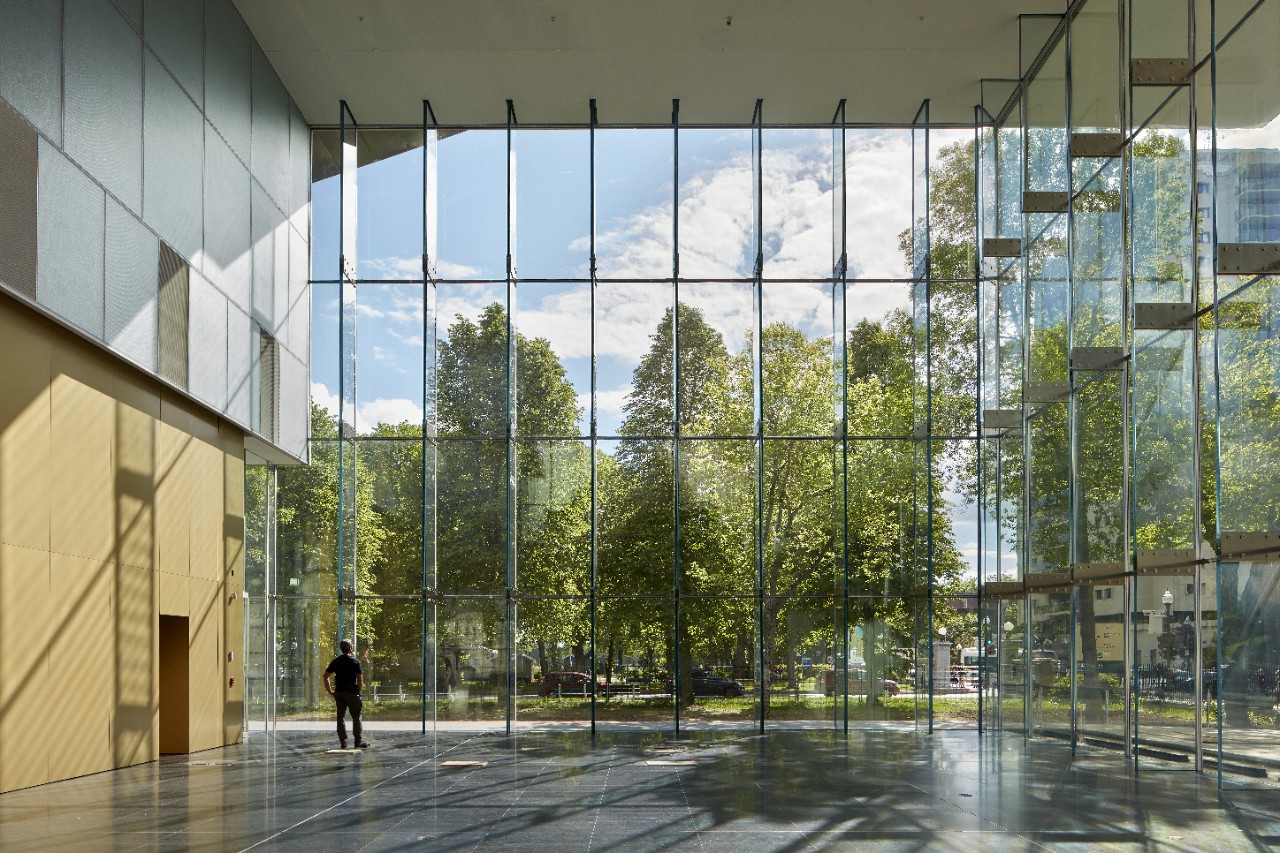
Oversized glazing
When combined with oversized glazing, low-E coatings with high light transmission can make a captivating first impression. Expansive glass panels create an open and vibrant atmosphere for a memorable architectural experience.
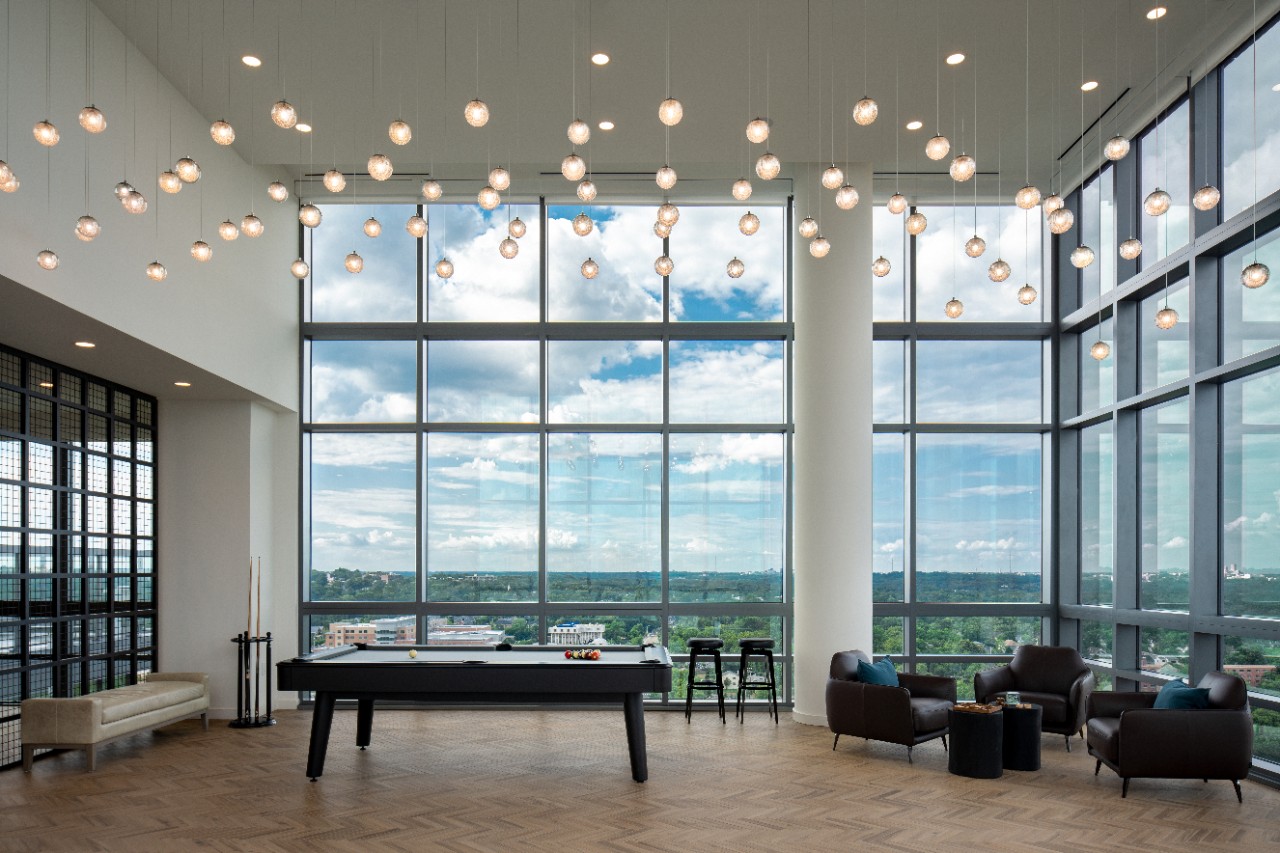
Vision glazing
Using glass with high light transmission for vision areas helps improve sight lines and dissolve the boundaries between inside and out. The glass reveals views of the outside and allows natural daylight indoors to help improve the wellbeing of building occupants.
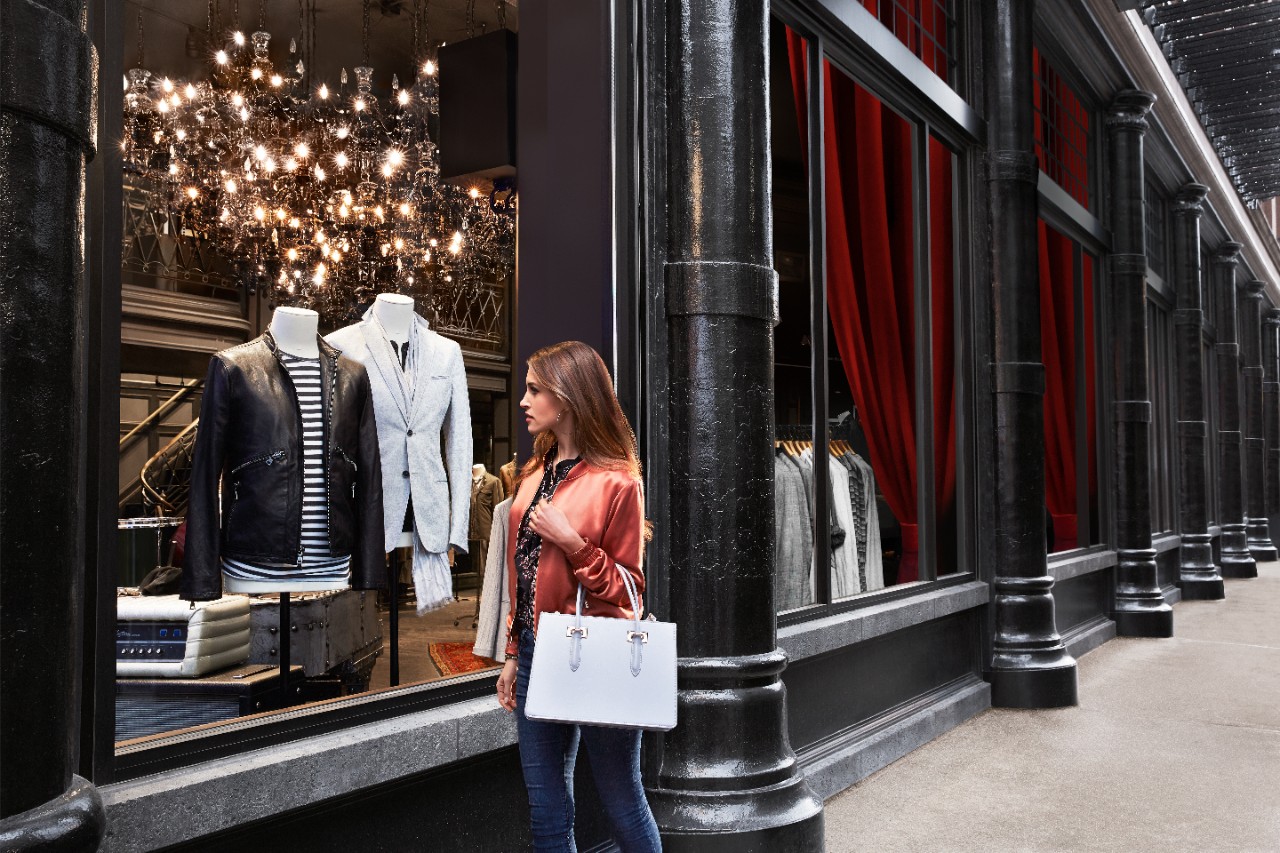
Storefronts
With the lowest possible reflection and the highest transparency, glass with high light transmission can help grab the attention of people who pass by storefronts, showrooms and restaurants. With reduced reflection and glare, views to products, displays and activity indoors remain clear and unobstructed.
Some of our projects made with high light transmission glass.
Want to see more architectural projects made with high light transmission glass? Visit our project section.
Our glass with high light transmission product solutions:
Placeholder




